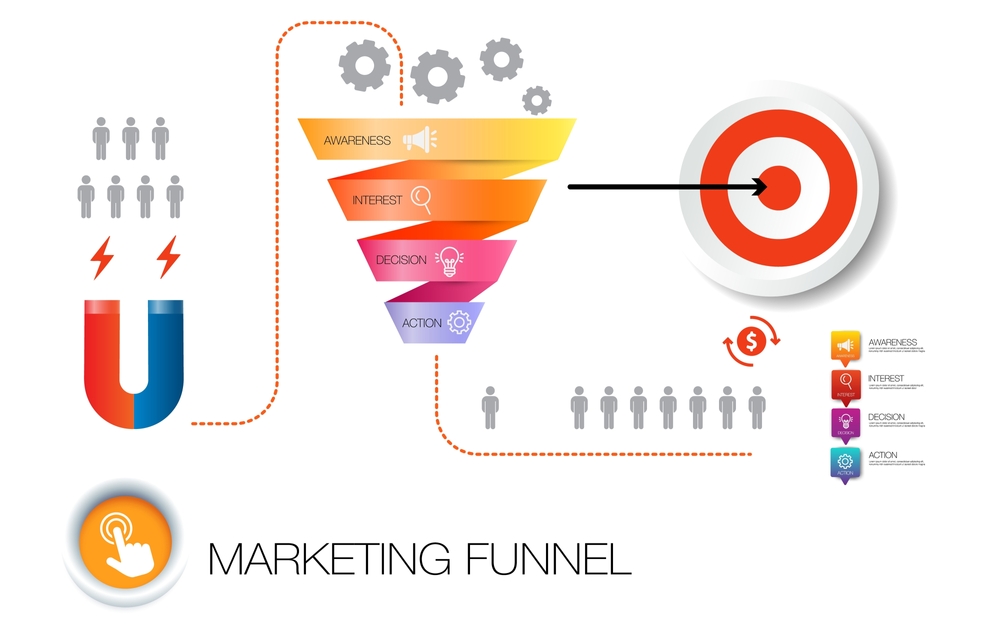Content marketing is vital in the modern digital landscape. It goes beyond simply producing quality content—it’s about sharing the right message with the right audience at the most effective moment. That’s where a well-crafted Marketing Funnel Content strategy comes into play. This approach ensures that your content speaks directly to your audience based on their current stage in the buyer’s journey, moving them from awareness to conversion with purpose and precision.
Understanding the Marketing Funnel
Before diving into content creation, it’s essential to understand the marketing funnel content. The content marketing funnel is generally broken down into three primary stages:
Top of Funnel (TOFU): Awareness stage where potential customers discover your brand.
Middle of Funnel (MOFU): The consideration phase where potential customers explore and assess different solutions to address their needs.
Bottom of Funnel (BOFU): This is the decision-making stage where the customer is prepared to make a purchase.
Each stage requires a different type of content tailored to the mindset and needs of the audience.
Why a Marketing Funnel Content Strategy Matters
A solid Marketing Funnel Content strategy helps streamline your content planning and makes your messaging more effective. By aligning your content with the funnel, you create targeted touchpoints that build trust, nurture leads, and improve conversion rates. Instead of pushing the same message to everyone, you’re delivering personalized content that matches where someone is in their buying journey.
Crafting Content for Each Funnel Stage
Top of Funnel (TOFU): Build Awareness
At this stage, your content marketing goal is to attract as many relevant people as possible. These are individuals who might not yet know they have a problem or that your brand exists. TOFU content should be educational, engaging, and easily shareable.
Best content types for TOFU:
Blog posts
Social media content
Infographics
Educational videos
eBooks and guides
Your content here should focus on solving broad problems, answering common questions, or providing general insights related to your industry. Use SEO to drive organic traffic and increase visibility.
Middle of Funnel (MOFU): Nurture Leads
Once a prospect is aware of your brand, they move into the consideration phase. They are actively looking for solutions and comparing their options. MOFU content should dive deeper into the value of your products or services, showing prospects why you’re a strong choice.
Best content types for MOFU:
Case studies
Whitepapers
Webinars
Product comparison guides
Email newsletters
This is your chance to establish your brand as a reliable and knowledgeable authority in your industry. Focus on demonstrating how your offerings solve specific problems and differentiate from competitors.
Bottom of Funnel (BOFU): Drive Conversions
At this final stage, the goal is to convert interested leads into paying customers. Prospects at the BOFU level are ready to take action, so your content should be persuasive and reassuring.
Best content types for BOFU:
Free trials or demos
Testimonials and reviews
Personalized email campaigns
Pricing pages
Detailed product videos
BOFU content should address final concerns and streamline the decision-making process to encourage a seamless purchase experience.
Tips for an Effective Funnel Content Strategy
Map Your Content: Identify what content you already have and where it fits within the funnel. Fill any gaps with targeted content.
Know Your Audience: Understand your buyer personas and what type of content resonates with them at each stage.
Use Clear CTAs: Each piece of content should guide the reader toward the next step—whether it’s downloading a guide, signing up for a webinar, or booking a demo.
Measure and Optimize: Use analytics tools to track engagement, conversions, and drop-off points. Use this data to refine your content strategy over time.
Maintain Consistency: Your brand voice and message should remain consistent across all funnel stages while adapting to the audience’s intent.
Common Mistakes to Avoid
One-size-fits-all content: Avoid pushing the same message to every visitor regardless of where they are in the funnel.
Neglecting the middle: Many businesses focus on awareness and sales but forget the importance of nurturing leads in the middle.
Skipping data analysis: Without measuring performance, you won’t know what’s working and what needs improvement.
Conclusion
Developing a strong Marketing Funnel Content strategy is one of the most effective ways to guide potential customers from awareness to decision. By crafting tailored content for each stage of the buyer’s journey, you can build trust, demonstrate value, and drive conversions with clarity and purpose. Keep in mind, effective content marketing goes beyond creation—it’s about consistently sharing the right message with the right audience at the right moment.


